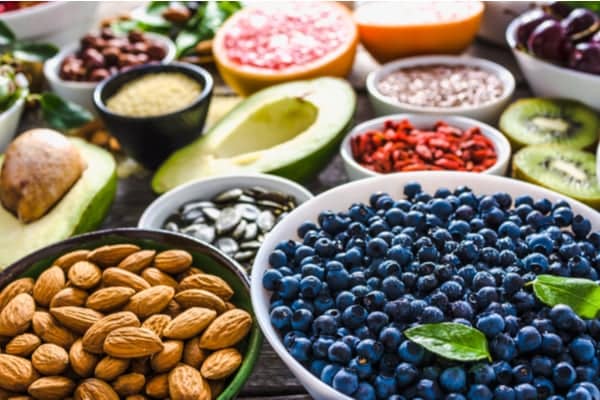ANIMAL PROTEIN OR VEGETABLE PROTEIN, WHAT IS THE BEST PROTEIN FOR MUSCLE GROWTH
Is there a single or multiple of protein foods that best promotes rapid muscle growth in endurance athletes? The animal proteins, Whey & Egg Whites are currently the favorites used by strength athletes while a multiple of plant
proteins from Soy, Pea, Peanut, Corn, Rice and Wheat sources are the favorites of a number of endurance athletes who advocate as health the prime pillar supporting their performance. This is a debatable subject with volumes of numerical definitions, yet it generally lacks a complete, responsible, conclusive rationale. Athletes need to consider which protein or which combination of proteins best enhances the optimal post-workout muscle growth in their bodies.
The choice may be resolved after careful evaluation of some of the existing scientific methods for rating protein quality. Pellett & Young summarized this issue well, “The concept of a single pattern of amino acids that may be used as a yardstick in comparing the nutritive value of food and diets is subject to the same limitations and qualifications as is the concept of ‘protein quality.’
The relative proportions in which the essential amino acids are needed almost certainly depend upon the species, its physiological state, and interrelationships and interactions among the amino acids themselves. The pattern of amino acids required for maintenance may be quite different from the optimal pattern to support maximum growth. In addition, the limited accuracy of amino determinations in food and the problem of biological availability of the amino acids present further complications. However, the advantage of a method of dietary assessment in terms of amino acids is considerable, and is, in many circumstances, the only practical approach.”[1]
METHODS FROM SCIENCE FOR DETERMINING PROTEIN QUALITY
In spite of some recognized limitations to this approach, the most accurate method for evaluating protein quality and quantity is measuring an individual athlete’s nitrogen-balance. Few athletes are equipped to measure their own nitrogen balance without the assistance of a high-tech sport science laboratory. Since individual nitrogen-balance measures are cost ineffective and time consuming, other scientific methods should be examined to determine what protein quality their food choices offer. These methods are called Biological Value[BV], Protein Digestibility[PD], Net Protein Utilization[NPU], Protein Efficiency Ratio[PER], and Protein Digestibility Corrected Amino Acid Score[PDCAAS], for determining the relative quality from food-source proteins.
BIOLOGICAL VALUE [BV]
The BV is an accurate indicator of biological activity of protein, measuring the actual amount of protein deposited per gram of protein absorbed. BV measure of protein quality expresses the rate of efficiency with which protein is used for growth. As a rule-of thumb, high BV-proteins are better for nitrogen retention, immunity, IGF-1 stimulation, and are superior for reducing lean tissue loss from various wasting states than proteins with a low BV score. Generally, high BV-proteins are more anti- catabolic than low BV- proteins.[2] STRENGTH TRAINING applications favor dietary protein sources with a high biological value. On a scale with 100 representing MAX-efficiency, these are the biological values[BV] of proteins in several foods.[3]:
PROTEIN BV*
Egg 93.7
Milk 84.5
Fish 76.0
Beef 74.3 Soybeans 72.8 Rice, polished 64.0 Wheat, whole 64.0 Corn 60.0
Beans, dry 58.0
*Biological Value[BV]=proportion of protein retained in the human body for maintenance and or growth.
Two Effects From Amino Acid Profiles On Blood Lipids #1-High BV-Proteins Raise Blood Lipids And Cholesterol #2-Low BV-Proteins Lower Blood Lipids And Cholesterol
Soy is generally recognized as the best single plant-source food with a complete amino acid profile. Why then did Soy, the top plant-source protein, rank only mid-scale below fish and beef? Soy is a low BV-protein, lacking A high volume of sulfur-containing amino acid methionine. The sulfur containing amino acids (cysteine being the other one) are particularly important for protein synthesis/growth, proper immune system function, and the body’s production of glutathione (GSH).
GSH is one of the most important anti-oxidants found in the body and protects cells and serves to detoxify a variety of harmful compounds such as hydrogen peroxide, carcinogens, reactive oxygen species, and many others. In particular, GSH is partly responsible for keeping low density lipoproteins (LDL) from oxidizing and clogging our arteries. Several studies have shown soy protein to be inferior to whey for the production of GSH and improvements in immunity.[4]
Though soy has a reputation for reducing cholesterol in man and animals, in one study rats fed soy protein that was not fortified with methionine as 13% of total calories, had an increase in cholesterol and an increased susceptibility of LDL cholesterol to peroxidation.
So not only did the rats cholesterol levels go up, but the LDL fraction oxidized easier potentially leading to clogged arteries. It is well established that an increased susceptibility of LDL to peroxidation is an essential step for the development of atherogenesis. These rats were found to have low levels of GSH and did not grow as well as another groups of rats fed casein.[5]
The addition of methionine to soy isolates greatly improves Soy’s BV and nutritional value, though it still does not reach the BV of whole egg or a good whey protein for that matter. However, rats fed soy protein enriched with methionine grew at a similar rate as those fed casein.[6, 7] Some research has suggested that soy is inferior to whey for the production of GSH and improvements in immunity.[8]
In general, soy protein has been shown to reduce cholesterol in a wide range of animals and man. One recent study found that when they separated the estrogenic compounds from soy, it failed to have the usual cholesterol lowering effects. This does not come as a big surprise, as the cholesterol lowering protective effects of estrogen are well known. However, soy protein appears to have several other mechanisms by which it lowers cholesterol (i.e. isoflavones, endocrine effects, fiber, saponins, etc.)
The specific effects of dietary protein on plasma cholesterol concentrations are well documented: animal proteins tend to be hyper-cholesterolemic as compared to plant proteins. Although this effect of protein source on plasma cholesterol has been shown in many species, the mechanism is not completely understood. Soy has been shown to reduce cholesterol in both man and animals…..Rabbits fed various foods were examined for blood serum cholesterol after 28 days on each protein, the following results in serum cholesterol were reported[9]:

Become an Expert Nutrition Coach at Your Own Pace
Download your free guide now.
PROTEIN SOURCE RESULTANT CHOLESTEROL[mmol/l]
Soy Protein Isolate 0.4
Soy Protein Concentrate 0.6
Peanut Protein 2.1
Wheat Gluten 2.1
Egg White[raw] 2.7
Pork Protein Concentrate 2.8
Beef Protein Concentrate 4.1 Casein 5.2
Skim Milk 5.9
Whole Egg Protein 6.1
Soy protein appears to have several inexplicable mechanisms by which it lowers serum cholesterol [10], from isoflavones, endocrine effects, fiber, saponins or its’ relative amino acid ratio structure. Animal studies indicate animal-based proteins produce a high lysine-low arginine ratio which raises serum cholesterol levels; while Soy’s lower lysine-higher arginine ratio significantly lowers blood serum cholesterol [11, 12].
Soy’s positive effect on cholesterol may also depend on the animal species being studied.[10, 13] In addition to protein- enhanced cholesterol reduction, epidemiological evidence suggests soy may reduce certain forms of cancer. Any protein that has positive implications for optimal blood lipid profiles is likely one that may affect both health and athletic performance over time and with prolonged use during training.
PROTEIN EFFICIENCY RATIO [PER] IN ANIMALS HAS A LIMITED APPLICATION TO HUMANS
Historically, the quality of proteins has been determined by Protein Efficiency Ratio (PER), which measures the weight gain of experimental growing rats when being fed the test protein. Rats have dissimilar protein requirement than humans. This is due to all furry animals requiring more sulfur amino-acids-(methionine, cysteine) to make sulfur-rich hair proteins (keratins). A rat has a whole-body coat of hair, requiring more proportionate-to-bodyweight] methionine/cysteine than humans. The PER- value, as compared to weight gain on the standard protein (casein), gives an indication of the quality of the test protein more for an animal subject, with only limited implications to humans:
PROTEIN PER*
Whey Protein 3.6
Milk Protein 3.1
Casein 2.9
Soy Protein 2.1
*Protein Efficiency Ratio[PER]=Gain in body weight divided by weight of protein consumed.
PER should not be totally neglected because athletes require more sulfur amino-acids-(methionine, cysteine) not for re-synthesis of hair but for growing quality muscle fiber after exercise expenditure. Any protein that has a higher PER value than 2.7 is considered an excellent quality protein.
On the other hand, while maintaining lean muscle mass and minimizing total weight gain are considerations in sports where weight gain may be performance-limiting, the use of soy as a prime protein-of-choice becomes a foregone conclusion. Examples of who should be limiting muscle weight- gains are marathon runners, ultra-marathon runners-cyclists, tri-athletes, or the many cyclists and mountain bike riders who race on courses with steep climbs. Their lean muscle mass gains are performance- enhancing up to a point of “No Return”, after which too much lean muscle mass gain is performance-limiting. This is best evidenced by our not seeing a “Hulkster” muscle-bulked body-type finishing in the top ten at the Boston Marathon, the Hawaii Ironman, or the Western States 100-Mile Ulta-marathon! The top-ten finishers in these events are generally described as lean and non-bulky in their muscular body type.
PROTEIN DIGESTIBILITY CORRECTED AMINO ACID SCORE [PDCAAS METHOD]
Nutritionists who disqualify the PER method for classifying protein quality as one for only reflecting the amino acid requirements for the rat, often will reference human protein quality evaluation standards from the “PDCAAS” scale. The Food and agriculture Organization (FAO) established a new method to compare the quality of various proteins based on the amino acid requirements of humans, which is thought to improve rating protein quality over the PER.
This method, known as “Protein Digestibility Corrected Amino Acid Score (PDCAAS) is internationally recognized. According to this method, an ideal protein is one that meets all of the essential amino acid requirements of the human body, noted by a relative rated value of “1.0′′. The Protein Digestibility- Corrected Amino Acid Score(PDCAAS)is the latest method for calculating protein quality, accounting for the digestibility of a food protein from its amino acid profile content. The PDCAAS method utilizes an amino acid requirement profile derived from human subjects.
It rationally replaces the Protein Efficiency Ratio (PER), which considered only amino acid growth requirements for rats, whose growth rates were measured by test protein feed lots.
PER methods underestimated the value of many of the vegetable proteins. Today, the Food and Drug Administration has endorsed PDCAAS-method for food labeling in the U.S. Applicable to humans, the PDCAAS is patterned after the amino-acid needs of 2-5 year old humans, since this group matches or exceeds amino-acid requirements for older children and adults (who require less than infants). Corrections for digestibility of protein are applied to give a protein-quality rating that’s much closer to reality for human metabolism. A PDCAAS can’t be higher than the “Complete Score” of 1.0. Soy protein Isolates, Whey Protein Isolates, and Egg Whites are the only proteins scoring a complete “1.00′′ PDCAAS rating.
{{cta(‘8c7c8cff-00e5-4cb0-844a-5352a5b5029f’,’justifycenter’)}}
PROTEIN DIGESTIBILITY CORRECTED AMINO ACID SCORE [PDCAAS] PROTEIN PDCAAS
Soy 1.00
Whey 1.00
Egg 1.00
Beef 0.92
Pea 0.73
Oats 0.57
Peanut 0.52
Rice 0.47
Corn 0.42
Wheat Gluten 0.25
THE PROTEIN DIGESTIBILITY [PD] METHOD FAVORS A COMBINATION PROTEIN MIXTURE. The proportion of food protein absorbed is called “Protein Digestibility”[P].
This rating scale also elevates the vegetable amino acid profile of soy to its animal-based counterparts. It should be noted that combinations of plant proteins appear to exceed or equal the amino acid profile of animal-based proteins as noted in the PD-method of protein quality rating below:
PROTEIN DIGESTIBILITY [PD*] METHOD FOR SINGLE & COMBINATE FOOD-PROTEINS SOURCE APPROXIMATE ADULT DIGESTIBILITY
Corn, Soy, Milk 1.00
Egg 0.97
Milk 0.97
Corn-Soy blend 0.92
Indian Rice Diet + Milk 0.92
Corn, Beans, Milk 0.90
Wheat, Refined 0.89
Soy Protein, Isolated 0.88
Wheat + Soy Protein—–>0.87
Fish Flour + Millet + Peanut Flour————>0.87
Rice, Polished 0.84
Corn + Beans 0.82
Wheat, Whole 0.79
Soybeans 0.78
Maize 0.76
*Protein Digestibility [PD]=Proportion of protein absorbed.
This method makes attractive mixing high BV-proteins with low BV-protein favoring maximal muscle growth potential with minimal body-fat gain and minimal serum cholesterol volume. A brief description of methodological BV-protein ratings is found in paragraph #3 above.
NET PROTEIN UTILIZATION [NPU] METHOD
The NPU method of evaluating protein quality reflects percentages of a food protein retained. The amount of protein eaten versus the amount of protein retained is reflected by the NPU*-rating method as noted below for selected foods:
FOOD NPU*
Eggs 94%
Milk 82%
Brown Rice 70%
Meats[most] 65-57%
Soybeans(alone) 61%
Legumes[alone] 50-60%
Whole Grains 50-60%
*Net Protein Efficiency Ratio[NPU]=Proportion of protein intake that is retained.
SOY HAS A POSITIVE METABOLIC ROLE APART FROM PROTEIN QUALITY RATINGS
Soy protein has been found to raise thyroid output in a wide range of animals from rats to rabbits and pigs.[9] Studies done with human subjects have been harder to quantify, but several studies suggest a positive elevating effect on thyroid hormones in people eating soy protein isolate. Soy protein has been shown to raise thyroid hormone output, which could be a real advantage to bodybuilders trying to shed body-fat. The intake of various high quality proteins has been associated with higher levels of thyroid hormone, but soy appears to have thyroid hormone raising abilities unique to that of other proteins. Some research has shown changes in T3 and thyroid stimulating hormone (TSH), the real effect appears to be with T4 which is elevated consistently in the studies done using animals-and to a lesser degree people who eat soy protein.
Other studies have found changes in the insulin/glucagon ratio that would favor reductions in cholesterol and possibly body-fat. At this time, exactly how soy proteins have this effect on thyroid output is not well understood, but science is working on it.
There may be a relationship between dietary protein source and plasma thyroxine concentration. It is hypothesized that feeding soy protein lowers plasma cholesterol concentration by causing an increase in plasma thyroxine concentrations.
The metabolic changes producing lower cholesterol levels occur when soy protein is fed.
These changes are consistent with changes induced by elevating thyroxine. Data presented from animal studies shows that feeding soy protein to laboratory animals consistently elevates plasma thyroxine concentrations.[9] The elevation in plasma thyroxine concentrations precedes the change in plasma cholesterol concentrations. The exception to this finding is persons with patho-physiological thyroid disorders may want to avoid dietary soy proteins, due to a negative systemic hormonal effect. Anyone with thyroid disease or a predisposition to thyroid dysfunction should limit their intake of soy- based protein food.
TWO IMPORTANT CONSIDERATIONS FOR DIETARY SOY PROTEIN IN TRAINING PROTOCOLS
William Brink, from whom I have quoted excerpts from his article on this subject, makes two interesting statements which have striking implications for endurance athletes: Two points he argues are more relevant to strength athletes but have implications for the serious endurance athlete, (1)- ”Though thyroid hormones are considered catabolic hormones, they are actually more catabolic to fat and carbohydrates, but stimulate protein synthesis if adequate calories are eaten and the amounts of thyroid hormones are not too high. This could be useful for increasing protein synthesis and reducing body-fat. More research needs to be done in this area.
(2)-When a person diets, the success of that diet is quickly brought to a screeching halt when the body figures out what you are up to and reduces the output of thyroid hormones. This is a reaction by the body brought on by a reduced caloric intake. The use of soy protein isolate to boost thyroid output could be exactly what the doctor ordered to keep thyroid levels raised during reduced caloric intake when dieting if the above evidence with soy proteins and thyroid function holds true in humans on reduced calories diets.
This would be particularly noticeable during a reduction in calories (i.e. dieting). The lower the calorie intake the higher the quality of protein needs to be to maintain lean body mass. Make no mistake about it, soy protein does not have the nitrogen retaining, anti-catabolic, muscle building abilities of proteins such as whey, whole egg, red meat, etc. However, soy does appear to have some other real benefits. So what do we do? So far, it appears that a person does not need to eat a great deal of soy protein isolate to get the benefits. Estimates of up to thirty grams a day of a high quality soy protein isolate should do the trick for most people.”[2]
Brink solves the dilemma from a proven strategy that works well for most athletes, “By mixing a high quality whey protein powder with a high quality soy isolate in a 2:1 ratio and supplementing two – three times a day, the athlete may experience best of all possible worlds (as related to the high BV, immune enhancing, nitrogen retaining abilities of the whey and the cholesterol lowering/thyroid stimulating abilities of the soy). There is no known reason to believe that mixing these two proteins will negate or interfere with the benefits or properties of either protein, since there is only scant research with healthy athlete subjects. Plain and simple, mix in a blender two scoops of whey protein to one scoop of soy protein isolate and take the mixture two-three times per day.”[2]
CONCLUSIONS FOR APPLICATIONS: SPECIFIC PROTEINS FOR SPECIFIC APPLICATIONS
A. During pre-event or preseason strength training phases, use of only Whey Proteins as a supplement regular dietary protein with intake volumes of up to 66% of required protein intake. This protocol suggests consuming 3 parts Whey Protein to 1 part Vegetable or other protein.
B. During ENDURANCE PEAK phases, use a 2 portion Whey Protein to 1 portion Soy Protein to maintain strength while lowering blood lipid fractions to minimal levels. Specifically measure the 2:1 gram ratios by reading the ingredients label panels.
C. During CALORIC RESTRICTION or weight control management phases, use Soy protein only as a supplement source to lean muscle mass maintenance for body-fat reduction.
D. During STRENGTH TRAINING phase protein VOLUME intake should be ideally 1.7 grams per kilogram body weight and no lower than 1.4 grams per kilogram body weight during all other phases. Negative nitrogen balance may occur at 1.0 grams per kilogram body weight resulting in lean muscle mass loss. Excess positive nitrogen balance may occur when athletes consume more than 2.0 grams protein per kilogram body weight, resulting in adipose tissue fat gain and excessive strain on the liver and kidney glands.
E. If “HEALTH” from training is your goal/focus, dietary implementation of the following dietary percents of each protein food class will provide a superb amino acid profile to support optimal “Blood Lipid Profile” balance:
Egg Whites-20%, Whey-20%, Soy-40%, Fish-10%, and Vegetable mixed protein sources-10%. This dietary profile also meets and/or exceeds the requirements set in each category listed in A, B, C, & D above.
AN EQUAL RATING FOR EACH PROTEIN FROM METHODOLOGY GUIDELINES
While this is may not be qualified as “real” science, a rating system for each individual protein from the former mentioned methods presented above may be determined by assigning a descending-ordered score of 10-9-8-7-6-5-4-3-2-1 points for rating each protein quality by each method. By totaling the average points we determine a ranking scale for each protein as follows:
PROTEIN AVERAGE SCORE [PER METHOD]
Egg 9.25
Whey 8.20
Casein 7.80
Milk 7.80
Fish 7.50
Soy 7.20
Peanut 7.00
Pork 6.50
Rice 6.30
Beef 6.30
Wheat 6.00
Corn 3.50
Beans 3.50
FURTHER DISCUSSION AND A POSTSCRIPT
This is inconclusive, but shows a relationship between more complete protein and less complete protein sources. It should be noted that the transit time from mouth to activating muscle cell growth ranges from 24 to 72 hours, depending on age, gender, genetic predisposition and individual fitness response to exercise stress. A combination of 2 or more protein food sources in a sufficient volume dose of 1.4 to 1.7 grams protein per kilogram of bodyweight meets most athlete’s amino acid requirements.
Choice of “Higher Ranked” proteins or protein combinations may insure a more rapid growth rate and enhanced post-exercise recovery rebound. It is such meager dietary differences that make up the time differential between a gold medal and dead last. Proper mixing of proteins makes a difference between the performance of a lifetime that excites pleasant memories…,or one you would like to forget…
AUTHORS: Dr. Bill Misner, Ph.D. & Mark J. Occhipinti, Ph.D., ND
Authors Note: We would like to acknowledge this is a debatable subject firstly because the human metabolic system is highly adaptive to a variety exogenous protein foods, secondly because one protein protocol “size” may not fit all, and lastly because we are still fine-tuning from the data collected in peer-reviewed research of the appropriately interpreted information for reliable conclusions. As a warning to the reader, this article may stir one to confirm their stance on which protein you have determined is the best for post- exercise-induced muscle growth.
REFERENCES
[1]-Nutritional evaluation of protein foods Eds. Peter L. Pellett, Vernon R. Young, United Nations University Press, Tokyo, Japan, Part I, No. 5, http://www.unu.edu/Unupress/unupbooks/80129e/80129E00.htm
[2]-excerpts reprinted by personal permission of the author:
“The (Partial) Vindication Of Soy Protein” by William D. Brink Quoted by the express permission of the author http://www.brinkzone.com/soy.html
[3]-Food and Agriculture Organization of the United Nations. The Amino Acid Content of Foods and Biological Data on Proteins. Nutritional Study #24. Rome (1970). UNIPUB, Inc., 4611-F Assembly Drive, Lanham, MD 20706.
[4]-Gotoh, N., Inhibition of Glutathione Synthesis Increases The Toxicity of Low Density Lipoprotein To Human Monocytes and Macrophages. J. Biochem. 296:151-154, 1993.
[5]-Moundras, C., Remesy, C., Levrat, M., Demigne, C., Methionine Deficiency in Rats Fed Soy Protein Induces Hypercholesterolemia and Potentiates Lipoprotein Susceptibility to Peroxidation. J. Metabolism. 44(9): 1146-1152, 1995.
[6]-Hosokawa, Y., et al, Hepatic Cysteine Dioxygenase Activity and Sulfur Amino Acid Metabolism In Rats: Possible Indicators In the Evaluation Of Protein Quality. J. of Nutri. 118: 456-461, 1988.
[7]-Hajos, G., et al, Effects of Proteolytic Modification and Methionine Enrichment On the Nutritional Value of Soya Albumins For Rats. Nutri. Biochem. 7:481-487, 1996.
[8]-Bounus, G., Gold, P. The Biological Activity of Undenatured Dietary Whey Proteins: Role Of Glutathione. Clin. Invest. Med. 14(4): 296-309, 1991.
[9]-Plasma cholesterol levels in rabbits fed low fat, low cholesterol diets. Effects of dietary proteins, carbohydrates and fibre from different sources.] Hamilton RMG, Carroll KK, Atherosclerosis 1976;24:47-62.
[10]-Potter, M. S., Overview of Proposed Mechanisms For the Hypo-cholesterolemic Effect of Soy. J. Nutri. 125 (3 suppl): 606S-611S, 1995.
[11]-Sanchez A, Hubbard RW, Plasma amino acids and the insulin/glucagon ratio as an explanation for the dietary protein modulation of atherosclerosis, Med Hypothesis, 1991;35:324-329.
[12]-Kurowska EM, Carroll KK, Effect of high levels of selected dietary essential amino acids on hypercholesterolemia and down-regulation of hepatic LDL receptors in rabbits, Biochimica et Biophysica Acta, 1992;1126:185-191.
[13]-Forsythe, W. A., Soy Protein, Thyroid Regulation and Cholesterol Metabolism. J. of Nutri. (review), 125 (3 suppl): 619S- 623S, 1995.



